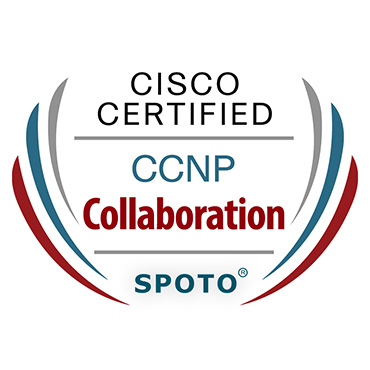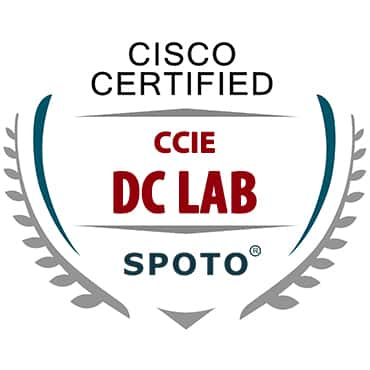If you want to be successful in your following CCNA interview, here is a well-curated list of CCNA interview questions and answers that will come in handy in your preparation. In addition, this blog has listed the most common CCNA interview questions that will help freshers and experienced candidates improve their interview preparation.
For CCNA, you should learn about static ips, dynamic IP, static ip addressing, dynamically ip addresses, and media access control address.
Also, if you want to get CCNA study material, please join our Cisco study group for more information. (*Prime Day Sale begins now! Up to 40% OFF for your dream IT product!* Click here for offer.)
| Categories | Exam Code | Pass Exam Dumps |
|---|---|---|
| CCNA | 200-301 | |
| 200-901 DevNet | ||
| 200-201 Cyber Ops |
Table of Contents
Q1. What is a “router”?
Answer: A router means a device that forwards packets with the network.
Q2. What is a “protocol” in a network?
Answer: A protocol in a network is an invisible set of computer rules that enable two devices to connect and transmit data to each other.
Q3. Distinguishing between switches and hubs
Answer: Switches are used in the data link layer, while hubs are used in the physical layer.
Q4 What is a network?
Answer: A network is used to connect or operate a network. It is creating and using wired or wireless networks to exchange information, ideas, files, and other electronic communications.
Q5. What is a switch, and why do we use it?
Answer: A switch is used to receive signals. A button is used to receive signals to create a frame. It forwards data packets between various LAN segments. It supports packet control when data is sent to the OSI model’s data link layer or network layer.
When sending packets, signaling is enabled and can be accessed by reading the destination address and forwarding the frame to the appropriate frame, so we use a switch.
Q6. What should be the size of an IP address?
Answer: 32 bits for IPv4 and 128 bits for IPv6.
Q7. What is DLCI?
Answer: DLCI (Data Link Connection Identifier) identifies each virtual circuit that exists on the network uniquely.
Q8. Which LAN switching method does the CISCO Catalyst 5000 use?
Answer: The CISCO Catalyst 5000 uses a store-and-forward switching method. It stores the entire frame into its buffer and performs a CRC check before deciding whether to forward the data frame.
Q9. How do I define an IP address?
Answer: Internet Protocol (IP Address) refers to a protocol used on the Internet. Internet Protocol (IP Address) is a 32-bit to 128-bit identifier of a TCP/IP protocol device. A device’s IP address must be unique to communicate.
It has two main functions, including host and location addresses. It is available in two versions, IPv4 (32-bit) and IPv6 (128-bit).
Q10. what is CDP?
Answer: CDP. CDP stands for “Cisco Discovery Protocol” and is a Layer 2 protocol that works on Media Access Control (MAC) addresses. CDP can identify port numbers, iOS details, router models, device IDs, and switch models.
Related study materials: Free Cisco Practice Test Ebook Download PDF to Test Your Prep
Q11. What does MTU stand for? What is the default size?
Answer: MTU stands for Maximum Transmission Unit. The default MTU size is 1500 bytes.
Q12. When does network congestion occur?
Answer: Network congestion occurs when an application sends more data than the network devices (such as routers and switches) can accommodate. This is a common situation when many users are trying to use the same amount of bandwidth.
Q13. What is the LLC sublayer, and what is its function?
Answer: LLC stands for Logical Link Control, which provides optional services for application developers. These options include providing traffic control to the network layer through the use of stop/start codes. It can also correct errors in the network.
Q14. What is BootP?
Answer: BootP or Boot Program is a protocol for booting diskless workstations in a network. These diskless workstations use BootP to determine their own as well as the server’s IP address.
Q15. What are Private IP and Public IP?
Answer:
Private IP is utilized within the local LAN.
Public IP is utilized throughout the Internet.
Q16. Define topology.
Answers: Topology is regarded as an arrangement of elements in a special order.
There are numerous types of topologies, including
- Bus
- Star
- Mesh
- Ring
- Hybrid
- Trees
Q17. What are ARP and RARP?
Answer: ARP is Address Resolution Protocol, which is used to map IP addresses to physical machines.
RARP is Reverse Address Resolution Protocol, which is used to map MAC addresses to IP addresses.
Q18. What are the different types of cables used in routing?
Answer: There are three different types of cables. The three different types of cables used include.
– Straight cable (switch-router)
– Crossover cables (PC-PC, switch-switch)
– Flip cables (console port to computer)
Q19. What is subnetting?
Answer: Subnetting is the process of creating smaller networks from a larger parent network. Each subnet is assigned some additional parameters or identifiers to indicate its subnet number as part of the network.
Q20. Why is UDP leasing favored over TCP?
Answer: This is because UDP is unreliable and non-sequential. It is not able to establish virtual circuits and acknowledgments.
Related reading: What are the available resources for learning CCNA?
Q21. What standards does the presentation layer support?
Answer: The presentation layer supports many standards, which ensure that the data is presented correctly. These standards include PICT, TIFF, JPEG for graphics, MIDI, MPEG, and QuickTime for video/audio.
Q22. What is the easiest way to configure the router remotely?
Answer: If a router needs to be configured remotely, it is most convenient to use the Cisco Auto Installer. Nevertheless, the router shall be connected to the WAN or LAN through one of the interfaces.
Q23. What does the show protocol show?
Answer:
– The routing protocols are configured on the router.
– The address assigned on each interface.
– The encapsulation method is configured on each interface.
Q24. How do you describe an IP address?
Answer: It can be done in three possible ways.
– Use dotted decimal. For example 192.168.0.1
– Use binary. For example 10000010.00111011.01110010.01110011
– Use hexadecimal. Example: 82 1E 10 A1
Q25. How do you switch to privileged mode? How do you switch back to user mode?
Answer: To enter privileged mode, you enter the command “enable” at the prompt. To go back to user mode, enter the command “disable.”
Conclusion
More CCNA interview questions and answers and anything about CCNA exam study materials, CCNA exam questions and answers, Cisco CCNP interview questions can all be found at the Cisco study group.
Latest passing report-100% pass guarantee
Recommend exam study materials:













Comments